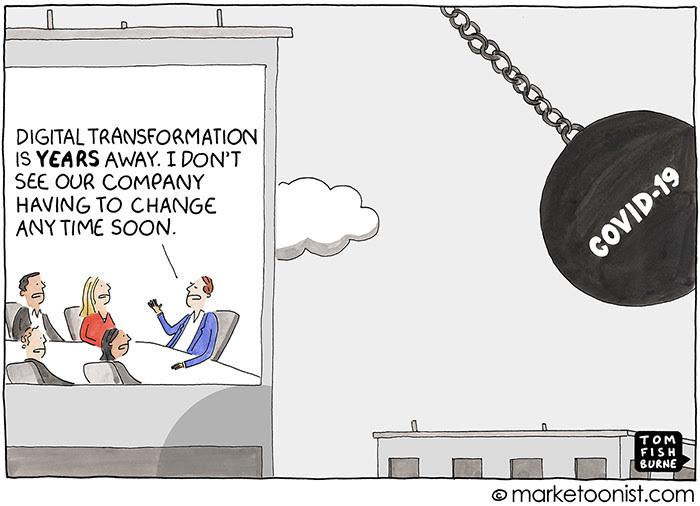In the current business era shaped by technology, learning and development has become a key factor in changing how we gain knowledge and abilities. This shift opens up new chances for convenient and adaptable education that goes beyond physical limits and time restrictions.
At the heart of this transformation lies video content – a dynamic and engaging tool that is redefining the educational landscape. As we navigate the world of learning and development, it’s evident that videos have become more than just visual aids; they are the cornerstone of a new era in education. Through motion, sound, and storytelling, videos have the power to captivate learners’ attention, simplify complex subjects, and foster deeper comprehension.
In this blog, we will explore the ways that video is transforming educational experiences. Together, we’ll unravel effective strategies that harness the potential of video to create enriching and impactful learning environments. So, let’s dive in!
The Power of Video for Learning & Development
In the realm of education, catering to diverse learning styles is paramount to ensuring effective comprehension and retention of knowledge. Visual and auditory learning styles have emerged as two of the most prominent ways individuals absorb information.
Research consistently underscores the profound impact of video content on knowledge retention. The pairing of visual and auditory elements in videos creates a multisensory experience that resonates with both learning styles. Studies reveal that video-based learning enhances retention rates, with learners retaining up to 65% more information compared to traditional text-based methods. This boost in retention is attributed to the ability of videos to convey complex concepts with clarity, engage emotions through storytelling, and facilitate a deeper connection to the subject matter.
Beyond knowledge retention, video content has the remarkable capacity to humanise the online learning experience. In a digital landscape that can sometimes feel isolated, videos bridge the gap by bringing personalities to life. Through facial expressions, voice tones, and gestures, the educator establishes a personal connection with their audience, fostering a sense of familiarity and trust. This human touch creates a supportive learning environment, promoting engagement and cultivating a sense of community among learners, even in the virtual space.
In essence, videos hold the potential to seamlessly integrate visual and auditory learning preferences, amplify knowledge retention, and instill a human touch into the learning and development journey. By harnessing these advantages, educators can create an enriching and personalised learning experience that resonates deeply with audiences of various styles, backgrounds, and aspirations.
Types of Educational Video Content
There are various video formats that offer dynamic ways to engage and educate your audience. Here are some effective video strategies that cater to diverse learning needs:
1. Explainer Videos
These are invaluable for breaking down intricate concepts. By simplifying complex ideas through animations, graphics, cutaways and concise narration, explainer videos make abstract theories more accessible and relatable.
Explainer Video Example: How does Microsoft Azure work?
Why we love it: The video employs seamless animations that convey the concept of progress. It adeptly educates the audience about Microsoft’s enterprise cloud solution. The narrator champions the narrative with a captivating quality that amplifies the message’s resonance.
2. Tutorial Videos
When it comes to practical skills and tasks, tutorial videos shine. They provide step-by-step guidance, enabling learners to follow along and practice at their own pace. From software tutorials to DIY projects, these videos empower learners with actionable skills.
Tutorial Video Example: PlayStation VR Set Up Tutorial.
Why we love it: PlayStation’s series of animated tutorials covers the entire setup process and employs a deliberate voiceover pace, allowing viewers ample time to follow instructions. This approach significantly reduces frustration for individuals replicating the steps at home.
3. Case Studies and Demonstrations
The power of real-world applications cannot be overstated. Case study videos showcase how theoretical knowledge translates into practical scenarios. Demonstrations give learners tangible examples, bridging the gap between theory and practice.
Case Studies and Demonstrations Video Example: How Slack serves as Sendle’s HQ, making collaboration possible across 4 time zones.
Why we love it: This video discusses how Slack benefits their hybrid company. Released during the pandemic, it effectively showcases Slack’s support for remote work, making it a powerful case study on addressing relevant topics with customer insights.
4. Interactive Videos
To foster active learning, interactive videos are a game-changer. They incorporate quizzes, polls, and branching scenarios that prompt learners to make choices, reinforcing comprehension and engagement. This format turns passive viewers into active participants.
Interactive Video Example: SAP Experience Economy.
Why we love it: We appreciate this video for its design. It appears as a standard 60-second explainer, but there’s a hidden gem: interactivity. Viewers can delve deeper into each scene through subtle interactive hotspots, enhancing the experience without disrupting the message delivery.
By strategically incorporating these video formats into your learning and development initiatives, you can enhance comprehension, engagement, and the overall learning experience. Each format brings its unique strengths, catering to different learning styles and preferences, ultimately cultivating a well-rounded educational journey.
Engagement and Connection Through Video
Video is a versatile tool that addresses diverse learning preferences, fostering engagement in the learning and development landscape. Visual and auditory learners benefit from the dynamic combination of imagery and narration, ensuring information is absorbed effectively. Additionally, kinetic learners can thrive through interactive elements and practical demonstrations that encourage active participation. By catering to these varied learning styles, video content maximises comprehension and retention, making learning an inclusive and personalised experience.
Educators play a pivotal role in learning and development, and video brings them front and center. Through videos, educators’ presence is not only maintained but also amplified. Their tone, expressions, and passion come through, creating a sense of connection and familiarity. Learners are more likely to engage when they feel a personal connection with their instructors, even in the digital realm. This connection humanises the learning experience, fostering a supportive and collaborative environment.
To enhance the educational impact, infuse videos with personal anecdotes and experiences. Sharing real-life stories helps learners relate theoretical concepts to practical applications. Instructors’ insights, gained from their own journeys, provide context and authenticity, making the content more relatable and memorable. Learners connect emotionally with these anecdotes, as they provide a glimpse into the practical relevance of the knowledge being shared. By incorporating personal experiences, educational videos become a bridge between theory and real-world understanding.
Best Practices for Creating Effective Educational Videos
- Planning and Scripting: Before diving into video creation, outline the content you intend to cover, along with clear objectives and key messages. A well-structured script provides a roadmap for your video, ensuring that you deliver the desired educational outcomes.
- Visual and Audio Quality: Clear visuals and high-quality audio are important for maintaining viewer engagement. Ensure appropriate lighting, camera angles, and a clutter-free background. Clear audio, free from background noise, is equally important. Maintain an appropriate pace in your narration to allow viewers to absorb information effectively.
- Visual Aids, Cutaways, Graphics and Animations: Visual aids, cutaways, graphics and animations enhance understanding and engagement. Incorporate these to simplify complex concepts. These visual elements complement verbal explanations and cater to diverse learning styles.
- Length and Structure: Keep your videos concise and well-structured. Long videos can lead to learner fatigue, while shorter, focused videos retain attention. Divide content into manageable segments, each addressing a specific topic or concept. This approach ensures that learners can absorb information without feeling overwhelmed.
- Accessibility: Accessibility is a vital consideration in educational videos. Incorporate subtitles or closed captions to make your content accessible to those with hearing impairments. Provide transcripts alongside videos, allowing learners to review content in text form. This inclusivity ensures that your educational content reaches a broader audience.
By paying attention to these aspects during the video creation process, you can deliver impactful educational content that resonates with learners and facilitates effective knowledge transfer.
Showcasing Learning Successes and Testimonials
Sharing learner success stories through video can have a profound impact on the learning and development experience.
- Impactful Success Stories: Highlighting real-life examples of people who have excelled through your educational offerings adds a human touch to your content. These stories inspire learners by showcasing the achievable results and the potential for personal growth.
- Motivating Through Testimonials: Video testimonials from learners who have benefited from your educational content can be powerful motivators. When people share their experiences and transformations, it resonates on a relatable level, encouraging others to engage actively and persist in their learning journey.
- Before-and-After Narratives: Leveraging before-and-after video narratives is an effective strategy for showcasing skill improvements. These narratives provide visual evidence of learners’ progress, making abstract concepts tangible. The visual journey from novice to proficient demonstrates the value of your educational content in a compelling and inspiring way.
By incorporating these approaches, you can foster a sense of community, motivation, and aspiration among learners, enhancing the overall effectiveness of your learning and development material.
Implementation and Integration of Video
Integrating videos into Learning Management Systems (LMS) is a strategic way to enhance the learning and development experience.
- Seamless LMS Integration: By embedding videos directly into your LMS, you create a streamlined learning journey. Learners can access video content within the familiar LMS environment, eliminating the need for multiple platforms and ensuring a cohesive experience.
- Enhancing Written Materials: Videos complement written materials and assignments, offering dynamic explanations that engage learners in different ways. Visual demonstrations and real-world examples clarify complex concepts, making learning more engaging and effective.
- Facilitating Discussions and Q&A: Video is a valuable tool for educators to foster discussions and Q&A sessions. Creating video prompts encourages thoughtful responses, while live or recorded video Q&A sessions provide a direct and personal interaction that enhances the online learning community.
By integrating videos into your LMS, leveraging them alongside written materials, and using them to facilitate discussions, you create an enriched learning and development environment that caters to various learning preferences and enhances student engagement.
Measuring Impact and Effectiveness
Evaluating the impact of video integration in learning and development involves a data-driven approach.
- Engagement Metrics: Analysing engagement metrics, including view counts and completion rates, provides insights into how well learners are interacting with video content. High view counts indicate interest, while completion rates signal effectiveness.
- Learner Feedback: Collecting feedback from learners is essential. Surveys or feedback forms can uncover preferences, effectiveness, and areas for improvement. Adjust your video strategies based on this feedback to tailor content to learners’ needs.
- Learning Outcomes: Linking improved learning outcomes to video integration is a key indicator of success. Monitor learners’ progress and assess if video content positively impacts comprehension, retention, and skill acquisition. Improved outcomes validate the efficacy of your video strategies.
By assessing engagement metrics, gathering learner feedback, and tracking improved learning outcomes, you ensure that your video integration efforts are yielding tangible benefits for both educators and learners in the learning and development landscape.
Future Trends in Educational Video
-
- Virtual Reality (VR): Virtual reality is revolutionising learning and development by immersing learners in simulated environments. It enables experiential learning, such as virtual field trips or interactive lab simulations, enhancing engagement and comprehension. VR offers a dynamic way to grasp complex concepts and fosters a deeper understanding through immersive experiences.
- Interactive Video: Interactive videos take engagement to the next level by allowing learners to actively participate. Features like branching scenarios, clickable elements, and quizzes promote active learning. Learners can make decisions and experience the consequences, making the learning journey more engaging and memorable.
- Artificial Intelligence (AI): AI brings personalisation to learning and development. It can analyse learners’ interactions, preferences, and progress to tailor content to their needs. Adaptive learning platforms powered by AI create customised learning paths, ensuring that each learner receives content at their pace and level. This personalised approach boosts engagement and knowledge retention.
a. Check out Docebo to find out more about what Adaptive Learning Platforms offer.
- Augmented Reality (AR): Augmented reality overlays digital elements onto the real world, enhancing the learning experience. Learners can interact with virtual objects superimposed onto their surroundings. AR transforms textbooks into interactive 3D models, making learning more engaging and facilitating better understanding of complex concepts.
These emerging technologies have the potential to redefine learning and development, making it more immersive, interactive, and tailored to individual needs. Although, their widespread adoption may take time due to technological and accessibility challenges. While these new technologies develop and become more attainable, businesses should still harness traditional video content styles to create engaging and impactful learning experiences.
Recap
-
- The Power of Video for Learning & Development:
- Videos redefine education by captivating learners with motion, sound, and storytelling.
- Video content boosts comprehension, retention, and bridges the gap between theory and practice.
- The Power of Video for Learning & Development:
-
- Types of Educational Video Content:
- Explainer Videos simplify complex ideas through animations and narration.
- Tutorial Videos offer step-by-step guidance for practical skills.
- Case Studies and Demonstrations provide real-world applications of concepts.
- Interactive Videos engage learners through quizzes and scenarios.
- Types of Educational Video Content:
-
- Engagement and Connection Through Video:
- Videos cater to diverse learning styles and foster inclusive engagement.
- Educators connect with learners through videos, enhancing the learning experience.
- Incorporating personal anecdotes and experiences enhances relatability.
- Engagement and Connection Through Video:
-
- Best Practices for Creating Effective Educational Videos:
- Plan and script videos for clear objectives.
- Maintain quality visuals and audio for engagement.
- Use graphics and animations to enhance understanding.
- Keep videos concise and well-structured.
- Ensure accessibility with subtitles and transcripts.
- Best Practices for Creating Effective Educational Videos:
-
- Showcasing Learning Successes and Testimonials:
- Success stories inspire learners with real-world achievements.
- Video testimonials motivate by showcasing tangible transformations.
- Before-and-after narratives demonstrate skill improvements effectively.
- Showcasing Learning Successes and Testimonials:
-
- Implementation and Integration of Video:
- Integrate videos seamlessly into Learning Management Systems (LMS).
- Videos enhance written materials and facilitate discussions.
- Implementation and Integration of Video:
-
- Measuring Impact and Effectiveness:
- Analyze engagement metrics and learner feedback for improvement.
- Link improved learning outcomes to successful video integration.
- Measuring Impact and Effectiveness:
- Future Trends in Educational Video:
- Emerging technologies like VR, interactive videos, AI, and AR have immense potential.
- These technologies will redefine learning and development, but traditional video content remains impactful for now.
By leveraging the power of video content and embracing effective strategies, businesses can create engaging, enriching, and impactful learning and development experiences for diverse audiences.
Ready to Transform Your Learning & Development Experience with Video?
Discover the possibilities of video content in revolutionising your educational video strategies. With Shootsta as your trusted video partner, you can unlock your creative potential and make video the heart of education in your business. Empower your people, inspire your audience, and create an effective educational environment using video.
Explore Shootsta’s Video Solutions: Shootsta offers a range of professional video services tailored to your educational needs.
Harness the Power of Video: Let Shootsta help you harness the power of video to enrich your learning and development strategies, engage your audience, and elevate the impact of your educational content.
Contact us today to learn more!


